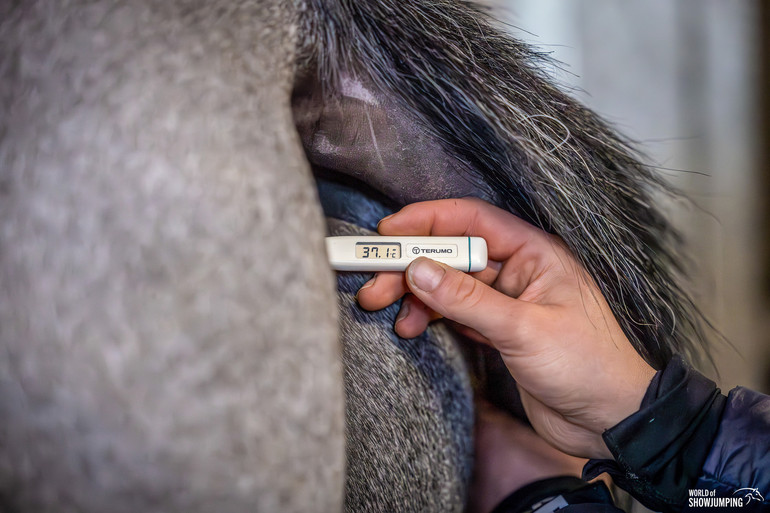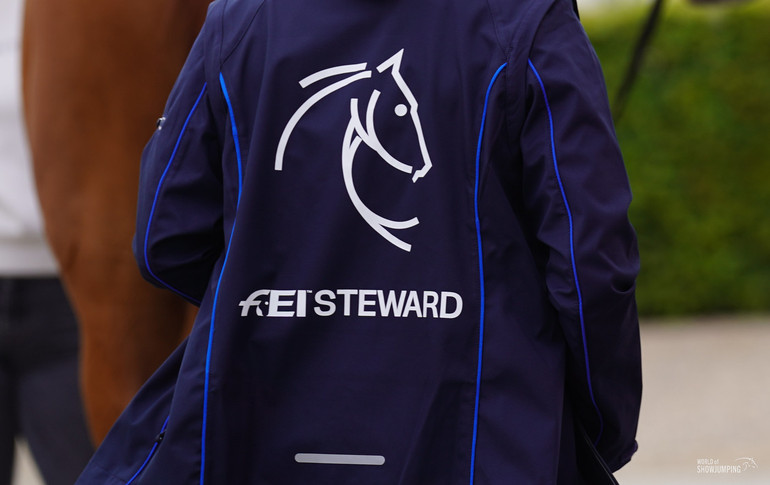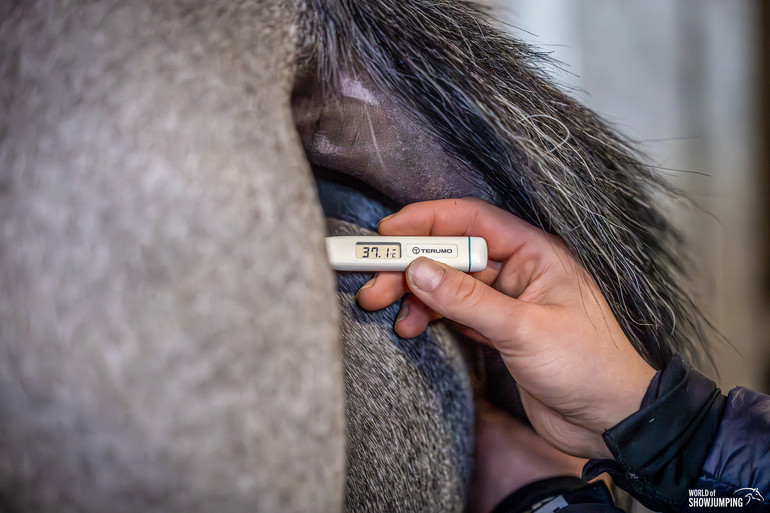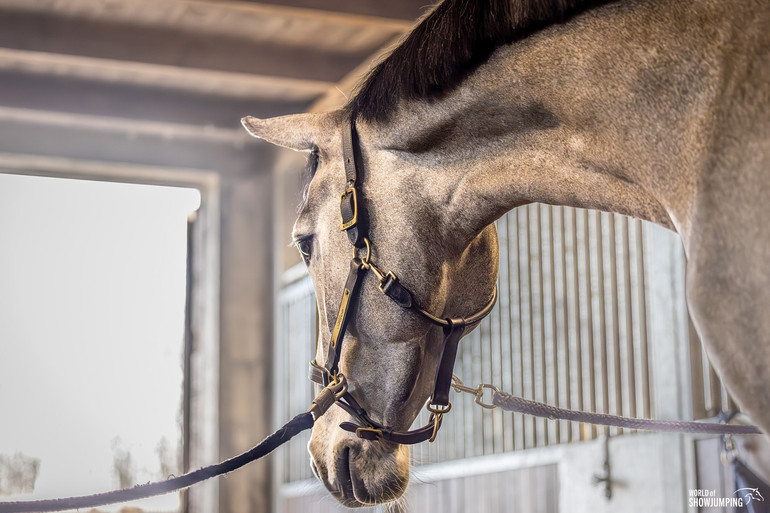Text © World of Showjumping
“Biosecurity is all about infection control,” FEI Senior Veterinary Advisor Caterina Termine tells WoSJ. “Practising good biosecurity is something that we all have to do; from riders to grooms to officials and organizers – it’s everybody’s responsibility.”
“It is difficult to say how likely it is that something like the 2021 EHV-1 outbreak would happen again,” Termine says – referring to the scale of the outbreak, that resulted in 18 known equine fatalities, a six-week shutdown of all international events in 12 European countries and 3,836 horses blocked in the FEI Database.
“I think sometimes people don't realise what they're doing and don’t consider the consequences of their actions,” Termine says about the importance of good biosecurity measures. “First of all, it's the horses’ welfare that's jeopardised, and it takes a long time for them to recover. It's a long road, it's hard work nursing them through a sickness and it costs a lot of money as well. Neglecting biosecurity is costly, not only in terms of horse welfare but also in terms of the financial aspect of treating sick horses.”
Who is responsible for what?
While biosecurity is everybody’s concern, the FEI Veterinary Regulations Chapter III on biosecurity details the different responsibilities of each stakeholder group and Annex X includes protocols for cleaning and disinfection of stables at FEI events.
“When it comes to the riders and the grooms and their responsibilities, first of all, before they arrive at an FEI event, they have to take the horses’ temperatures twice a day for three days and record it in the HorseApp,” Termine explains.
“They also have to fill in the equine health self-certification form in the HorseApp, to declare that the horse is coming from stables where there's no signs of infectious diseases. When they do get to the event, they have to take the horses’ temperatures twice a day, every day whilst they're there and record it in the HorseApp. And if there's any change in the horses’ health status – absolutely anything – it has to be brought to the attention of the veterinary delegate immediately. We don't really want anyone encouraging nose to nose contact either, or sharing equipment, as this can also transmit disease. Washing your hands in between horses and keeping everything clean is super important, as well as wearing gloves when necessary. This year we've introduced a new rule, no longer allowing cross tying of horses in stable aisles, which is a new biosecurity and safety aspect.”
The most important tool
“Motivating people to take temperatures is actually quite difficult because a lot of people may think that it's not worthwhile, they don't really see the point or they think it’s time consuming,” Termine points out.
“However, it really is worth it. One of the most important things we can do to stop any disease transmission is to take the horse's temperature. The horses will get a fever before they show any other clinical signs of infection; it's like an early warning indicator and we can then put extra biosecurity measures in place straight away and tightening biosecurity measures early stops diseases from spreading. In addition to taking the horses’ temperatures, being sensible about avoiding contact, washing your hands, making sure boxes are clean and disinfected and that all horses have their own equipment, those are important things to consider as well. There are a whole lot of measures, but the temperature taking is one of the most important and it shouldn't be overlooked in any way.” [Editor’s note: Falsification of a temperature record leads to a disqualification and report to the FEI Veterinary Department. All sanctions can be found in the FEI Veterinary Regulations Annex VI.]
Minimize touching horses
“When it comes to the officials, the veterinary delegates examine the horses on arrival for any signs of infectious disease, they'll check the flu status and make sure they've been vaccinated in accordance with the rules,” Termine continues to explain. “This year, we have introduced a new rule: In case horses are stabled on the venue for more than a week, the veterinary delegate has to organise supervised temperature taking of 5% of all the horses every day. It's just an extra control measure to make sure that all the horses are ok.”
“Everybody, all the officials as well, have to practise good biosecurity. Officials must touch horses only if it's absolutely necessary, and if they do touch a horse, they must wash, gel their hands or change their gloves between each horse. And if they've used any equipment, that should be sanitised between the use on different horses. Their job is to circulate and ensure that the rules are complied to, but at the same time, they must minimize touching horses.”
Cleaned, disinfected, sealed
A huge amount of an organizer’s job is done before the horses arrive at the venue. “All the stables have to be cleaned, disinfected and sealed,” Termine explains.
“We've introduced a cleaning and disinfection protocol this year, which is something that the OCs can follow to make sure that the process is harmonised. Isolation stables – a minimum of two plus one for every 100 horses – must be provided by the OC and they have to be cleaned and disinfected as well. Isolation stables have to be 50 metres away from the flow of horses and an overflow isolation – a location of isolation stables away from the event – must be planned as well. Every event has to have a biosecurity contingency plan, which is a FEI template that the OC fills in. This is something that has to be submitted to the FEI in advance of the event.”
Rules versus reality
However, in reality, who checks that every single box at every single venue is cleaned, disinfected and sealed? “Biosecurity is everybody's concern,” Termine repeats. “However, it's controlled more by the vets, who have greater training in this than other members of the community. The steps in the cleaning and disinfection protocol are there to help and support and make sure that the right decisions are made, that it's all done correctly and the venues are safe for the horses. As a rider or a groom, if you arrive at a venue that you believe does not have adequate biosecurity measures in place, you should immediately go to the veterinary delegate and raise it with them. The veterinary delegate reports to the FEI Veterinary Department, and if there's anything that's not right at an event, we will follow up. This reporting system is part of the Key Event Requirements (KER), a project launched this year. With the new system in place, there is a method of feeding back information to the event organisers on things that need to be changed.”
“We're here to help,” Termine concludes. “We can be contacted on [email protected] if there's a problem. We at FEI Veterinary Department want to help people in making sure that the horses are safe. The veterinary delegates are on site to resolve issues, but if there's anything any member of the community is concerned about, they are welcome to contact us and let us know.”
7.3.2024 No reproduction of any of the content in this article will be accepted without a written permission, all rights reserved © World of Showjumping.com. If copyright violations occur, a penalty fee will apply.















